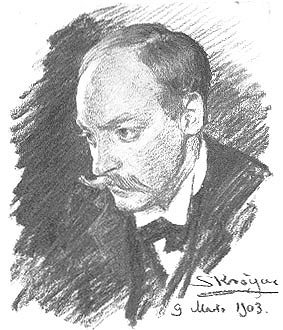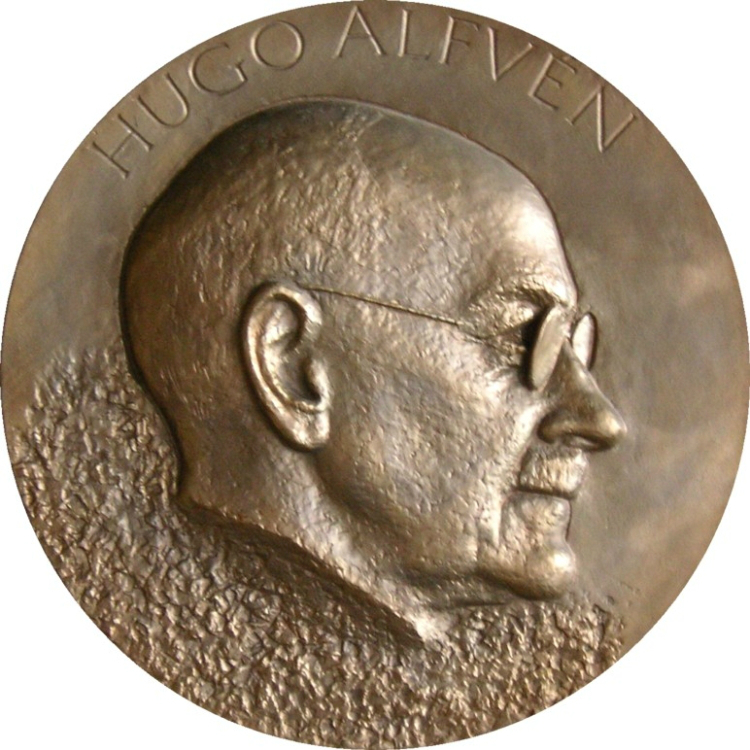|
휴고 알벤 Hugo Alfven(1872 ~ 1960)
Violinist
Alfvén was born in Stockholm and studied at the Music Conservatory there from 1887 to 1891 with the violin as his main instrument, receiving lessons from Lars Zetterquist. He also took private composition lessons from Johan Lindegren, a leading counterpoint expert. He earned a living by playing the violin at the Royal Opera in Stockholm. He also played the violin in Hovkapellet (the Swedish court orchestra).

Conductor
Starting in 1897, Alfvén travelled much of the next ten years in Europe. He studied violin technique in Brussels with César Thomson and learned conducting in Dresden as sub-conductor under Hermann Ludwig Kutzschbach. In 1903-4 he was professor of composition at the Royal Conservatory, Stockholm. From 1910 Alfvén was director musices (music director) at the University of Uppsala (a post he held until 1939). There he also directed the male voice choir Orphei Drängar (or 'O.D.') (until 1947). He conducted in festivals at Dortmund (1912), Stuttgart (1913), Gothenburg (1915), and Copenhagen (1918-1919). He toured Europe as a conductor throughout his life. He received a Ph.D. honoris causa from Uppsala in 1917 and became a member of the Royal Academy of Music in Stockholm in 1908.[1] Alfvén recorded some of his orchestral music in stereo late in 1954 (the first classical stereo recordings made in Sweden) [2]; the recordings were issued on LP in the U.S. by Westminster Records. A three-CD collection of Alfven's recordings as a conductor has been issued.
Composer
Alfvén became known as one of Sweden's principal composers, together with Wilhelm Stenhammar. Alfvén's music is in a late-Romantic idiom. His orchestration is skillful and colorful, reminiscent of that of Richard Strauss. Like Strauss, Alfvén wrote a considerable amount of programmatic music. Some of Alfvén's music evokes the landscape of Sweden.
Among his works are a large number of pieces for male voice choir, five symphonies and three orchestral "Swedish Rhapsodies." The first of these rhapsodies, Midsommarvaka is his best known piece.
Alfvén's five symphonies, the first four of them now several-times recorded (with another cycle in progress), give a picture of the composer's musical progress. The first, his opus 7 from 1897, is an early F minor work, tuneful in a standard four movements. The second (1898-9), his opus 11 (and in a way his graduation piece, as interestingly recounted [1]) in D major concludes with a substantial, even powerful chorale-prelude and fugue in D minor. The third symphony (1905) opus 23 in E major, also in four movements, more mature in technique though light in manner was inspired by a trip to Italy.
The fourth symphony in C minor of 1918-9 - opus 39, From the Outermost Skerries (there is also a tone-poem, A Legend of the Skerries) — is a symphony in one forty-five minute movement using wordless voices, inspired by Carl Nielsen's Sinfonia Espansiva. The 5th in A minor, begun 1942 is one of the composer's last works, and has only been recorded twice in full (recordings and performances of the 5th while rare enough, are usually of its quarter-hour first movement).
Swedish Rhapsody #1 (Midsommarvaka)
The first rhapsody - Swedish Rhapsody #1, also known as Midsommarvaka (Midsummer Vigil) - was written in 1903 and often simply called the "Swedish Rhapsody" is the best known piece composed by Hugo Alfvén, and also one of the best known pieces of music in Sweden.
There are several pop culture references to the main theme of Alfvén's "Swedish Rhapsody #1":
It was arranged and recorded as a fingerstyle guitar solo in 1957 by American guitarist Chet Atkins, and became one of Atkins best-known recordings.
The solo is also featured on Deep Purple's classical live album "Made in Japan" (1972) where the guitarist Ritchie Blackmore plays it in his solo on the song "Lazy"
The original version of a popular song "Mah Nà Mah Nà" interpolates its melody
It is featured in The Simpsons episode Little Orphan Millie erroneously depicting Danish culture.
Painter and Writer

Alfvén's contributions were multidimensional and also included painting and writing. He was a talented watercolorist and once thought to devote himself entirely to painting. He also was a gifted writer. His 4-volume autobiography has been called "captivating" and provides significant insight into the musical life of Sweden in which Alfvén was a central figure for well over half a century.
Personal life
Alfvén was married three times. His first marriage (1912-1936) was to the Danish painter Marie Triepcke (1867-1940), who had previously been married to the painter Peder Severin Krøyer (1851-1909). After his divorce from Marie in 1936, he married Carin Wessberg. They were together for two decades (1936-1956) before she died. He married Anna Lund in 1959. He died in 1960 in Falun (Sweden)[3] just after his 88th birthday. | 


